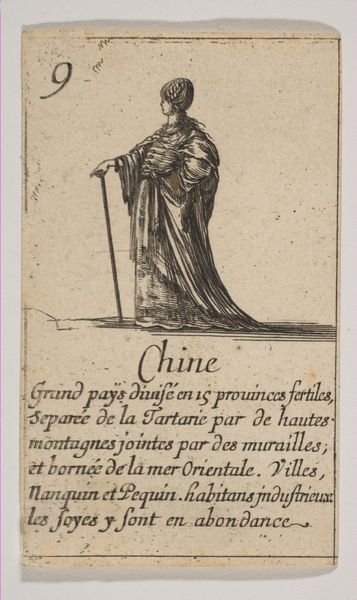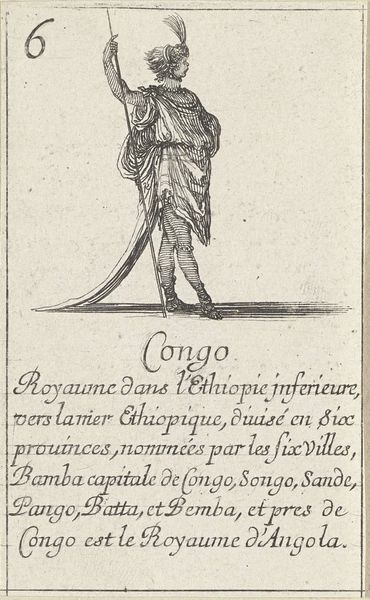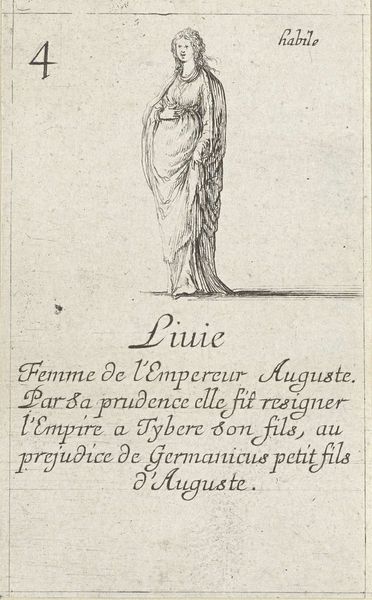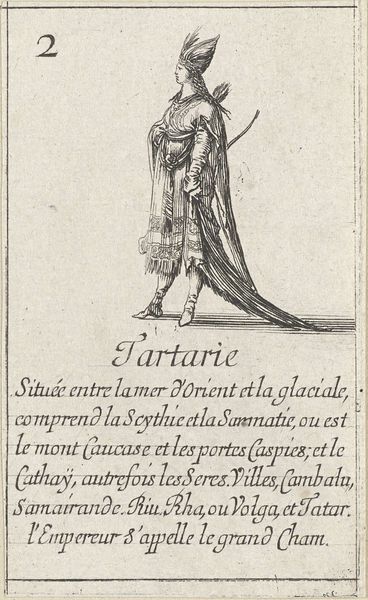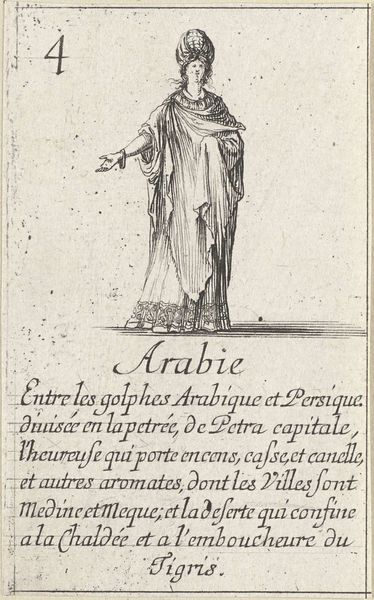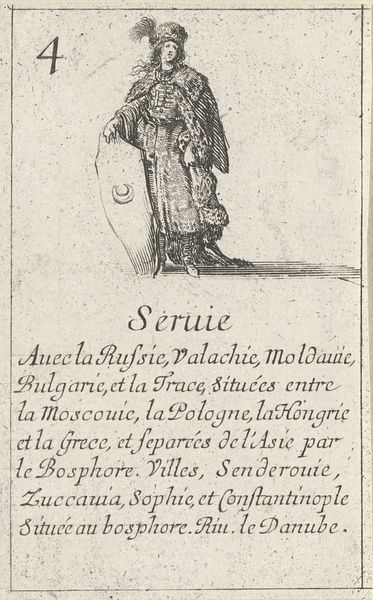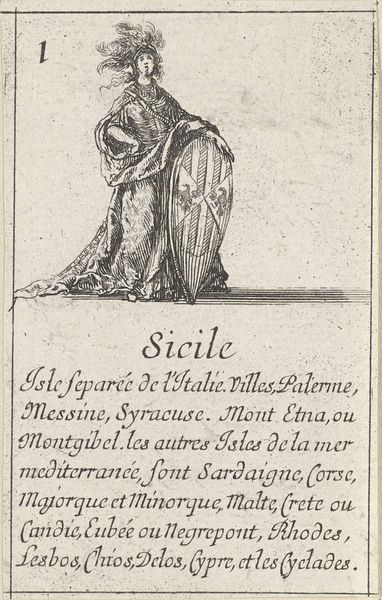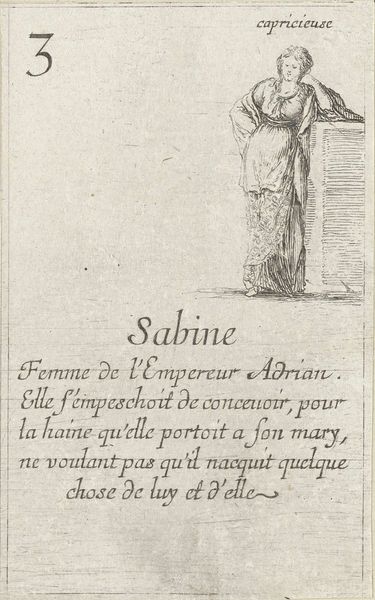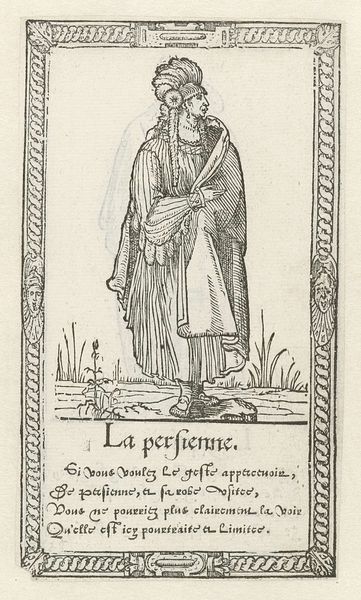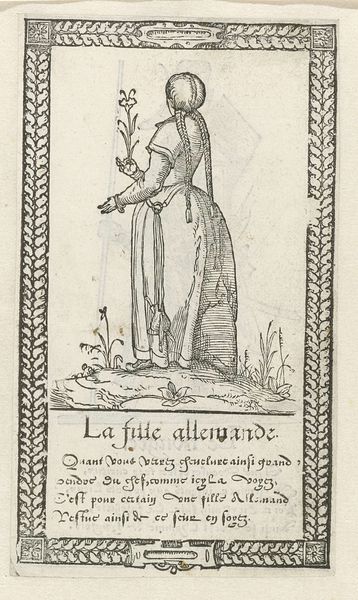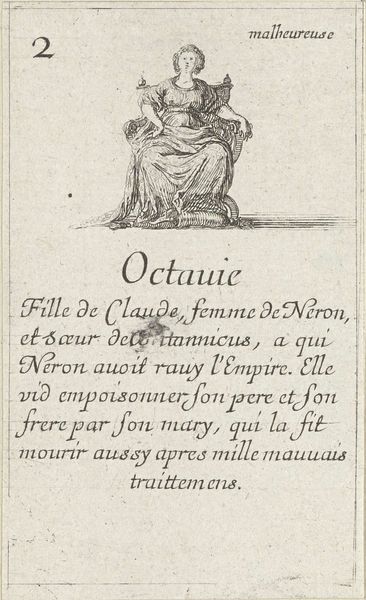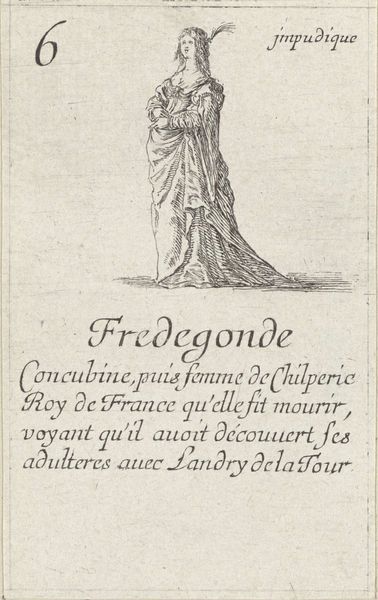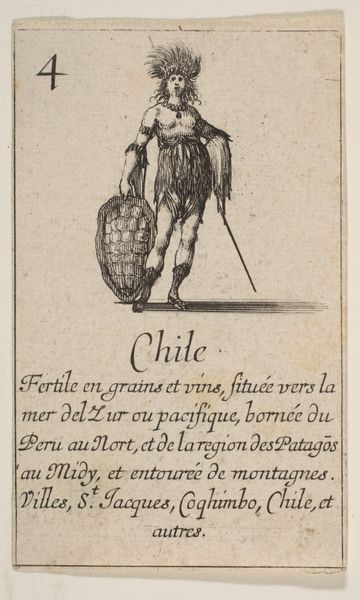
print, engraving
#
portrait
#
baroque
# print
#
asian-art
#
line
#
history-painting
#
engraving
Dimensions: height 89 mm, width 55 mm
Copyright: Rijks Museum: Open Domain
Curator: What strikes me about this print is its elegant depiction of a woman, labelled 'Chine'. The print is entitled “Vrouw uit China,” or “Woman from China” in English. Stefano della Bella, a baroque artist, created this engraving sometime between 1620 and 1664. It’s currently held here at the Rijksmuseum. Editor: I’m immediately drawn to the lines themselves. The thin, precise engraving on what must have been a copper plate to make the printing. It speaks to the labor involved. Think about the craft required to achieve such detail. I am curious about how accessible the material of such printing would have been during the mid-17th century in China and/or Europe? Curator: Good point. These prints were designed for distribution, to feed a growing appetite for knowledge about faraway lands and their people. Images like these circulated widely and shaped European perceptions of the East. Consider the impact: a single sheet of paper becoming a window onto an entirely different culture, however distorted. Editor: Yes, and how loaded this imagery is in terms of production. We have an artist who probably never left Europe, using materials acquired and distributed within the continent, to portray a personification of a far-away nation and culture through printmaking, likely for commercial sale, or trade in Europe, all within coloniality. The entire printing enterprise here says a lot about Baroque-era European economy, artistry, knowledge dissemination, and global power. Curator: Absolutely. The figure’s garments, though stylized, indicate status and prosperity, reflecting an idealized view of China, “Villes, Nanquin et Pequin. habitans industrieux les Joyes y sont en abondance," as indicated below the portrait. The print promotes China as a land of fertile resources. It almost creates a type of exotic "advertisement" for the "Orient" while othering and framing this view within coloniality and Western consumption. Editor: Seeing the process like that casts it in a very interesting light. It underscores how even seemingly simple images are connected to larger networks of labor and ideas. It definitely changes how I perceive her representation and her relationship to consumption in that period.
Comments
No comments
Be the first to comment and join the conversation on the ultimate creative platform.
